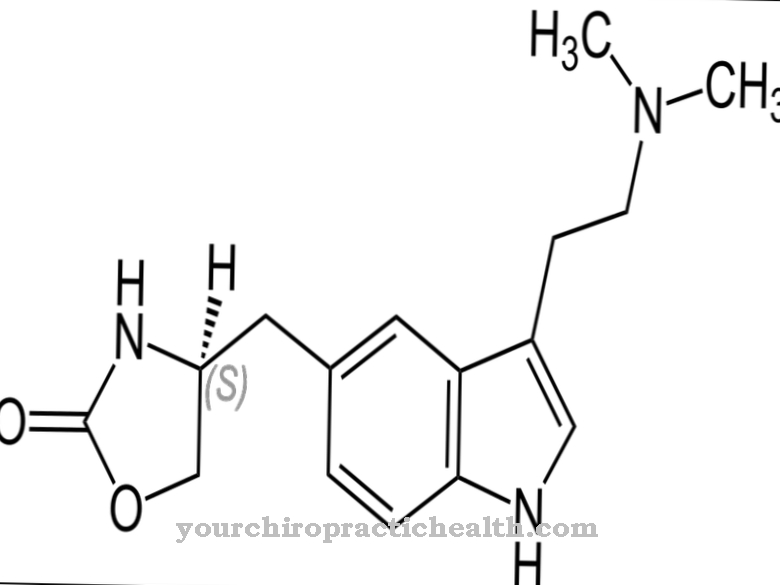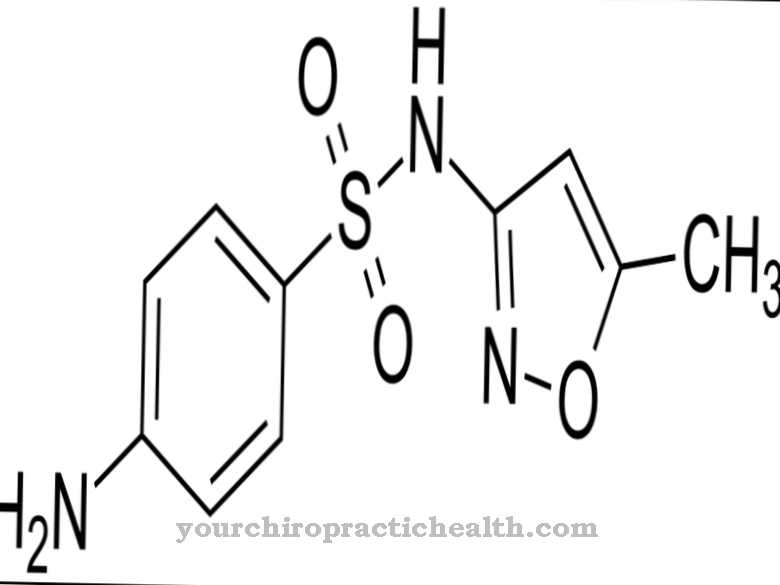Chloramphenicol is a broad-spectrum antibiotic which, due to the possible serious side effects, is only used as a reserve antibiotic for severe bacterial infections that cannot otherwise be controlled. It can cause aplastic anemia, which is life threatening.
What is chloramphenicol?
Chloramphenicol is a broad spectrum antibiotic which, due to the possibility of aplastic anemia as a side effect, is only used as a reserve antibiotic. It was first obtained from the bacterium streptomyces venezuelae in 1947. Today it is only made fully synthetically.
Life-threatening aplastic anemia can occur during treatment with chloramphenicol. For this reason, it is not widely used, but is only used as a reserve antibiotic for bacterial infections that cannot be controlled otherwise. In principle, however, it has a broad spectrum of activity against gram-positive and gram-negative bacteria.
Topical application is not recommended as systemic side effects are possible; however, chloramphenicol is still permitted in skin medicines, eye and ear drops and eye ointments. It should be noted, however, that the incidence of systemic side effects with topical treatment is very low. Thus an individual consideration should always take place. The risks of topical use of chloramphenicol are controversial among experts.
In veterinary medicine, chloramphenicol is used against chytridiomycosis, a fungal disease in amphibians. So it is also effective against the chytrid fungus (a fungus).
Pharmacological effect
Chloramphenicol prevents the translation of the mRNA into amino acids. It is therefore a so-called translation inhibitor. This leads to the inhibition of the build-up of bacterial proteins and thus also to the inhibition of the growth and multiplication of the bacteria. Chloramphenicol is therefore a bacteriostatic antibiotic.
It is easily accessible to tissues, including through the placenta (mother cake) and breast milk. The bioavailability is 80% for oral administration and 70% for intramuscular injection. The plasma protein binding is between 50 and 60%, the plasma half-life is 1.5 to 3.5 hours. In the case of kidney and liver dysfunction, the plasma half-life is increased, which must be taken into account in the dosage. Metabolism takes place hepatically, almost exclusively via glucuronidation. The elimination then takes place renally.
Medical application & use
Due to the unfavorable side effect profile, chloramphenicol is only used as a reserve antibiotic when other treatment options are either not available or have failed. The main indications are therefore severe bacterial infections that cannot be controlled otherwise. These indications for chloramphenicol include typhoid, paratyphoid, dysentery, diphtheria, malaria and rickettsioses.
In addition to the above-mentioned indications, chloramphenicol can be used as a reserve antibiotic for meningitis caused by pneumococci or Haemophilus influenzae due to the good fluid flow.
Topically, chloramphenicol is used to treat conjunctivitis (conjunctivitis) and to treat corneal infections. Chloramphenicol is also used for blepharitis (inflammation of the eyelids). It is also used for skin infections and eczema.
Risks & side effects
The worst possible side effect of chloramphenicol is what is known as aplastic anemia. It occurs rarely but is life threatening. In aplastic anemia, damage to the bone marrow occurs, which means that hardly any blood cells are produced in the bone marrow. Aplastic anemia can occur weeks and months after treatment with chloramphenicol. Signs of this anemia are extreme tiredness, bleeding and possibly severe infections.
Additional side effects are allergic reactions when used locally, which can manifest as itching, reddening of the skin, skin irritation and swelling. With systemic use, Gray syndrome can occur in newborns. Furthermore, the Herxheimer reaction is a possible side effect.
It should be noted that chloramphenicol interacts with anticoagulants, methotrexate, and sulfonylureas. This increases the effectiveness. Barbiturates and phenytoin reduce the effectiveness of chloramphenicol. When taking oral contraceptives (eg the "anti-baby pill"), make sure that chloramphenicol affects the effectiveness of the preparation. So it should be additionally contraceptive.
Chloramphenicol is contraindicated in newborns. Furthermore, there are contraindications in the case of severe liver failure, pregnancy and during breastfeeding.
Preparations containing chloramphenicol require a prescription. Chloramphenicol must not be used in food-producing animals in the EU.














.jpg)













